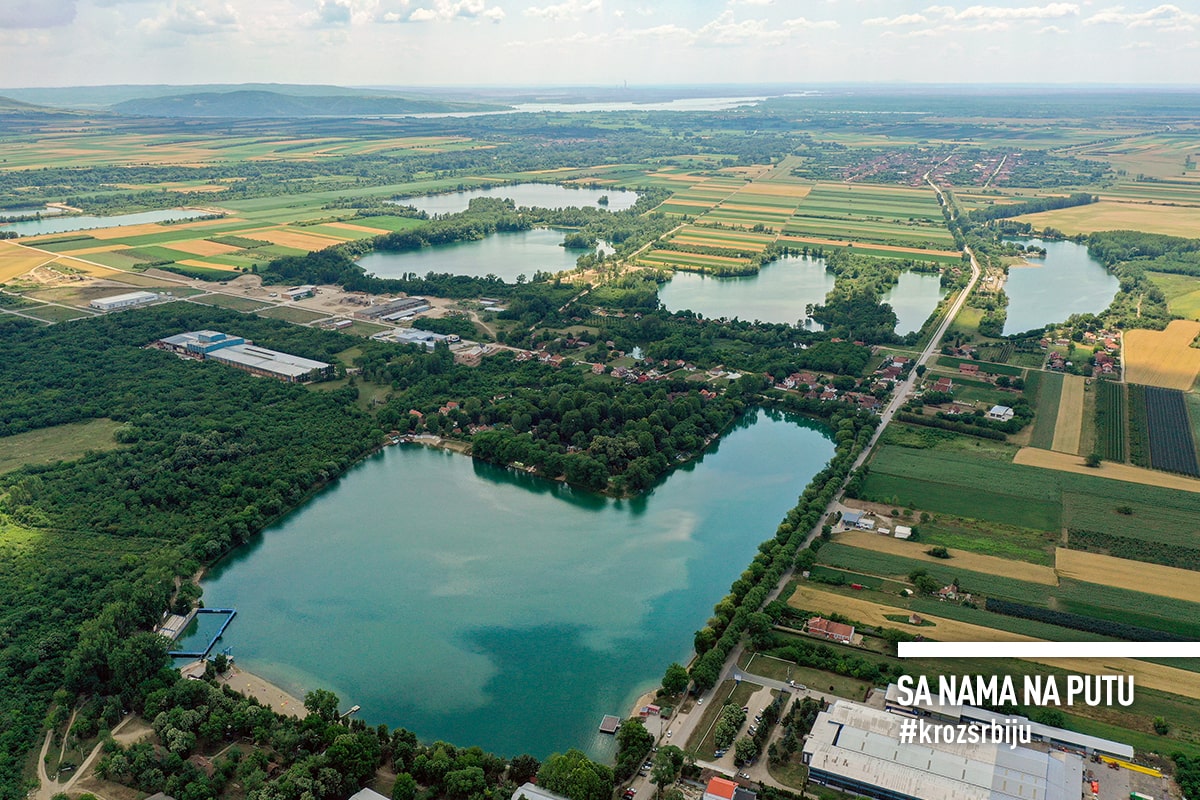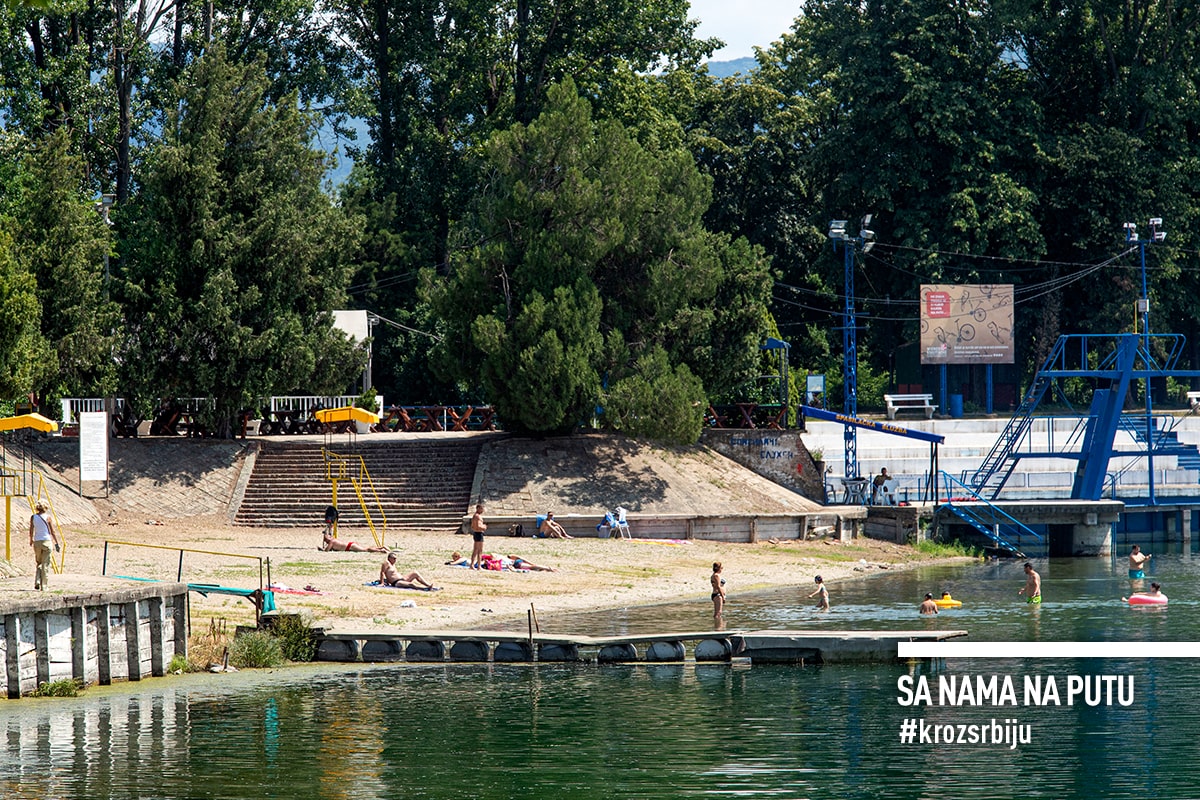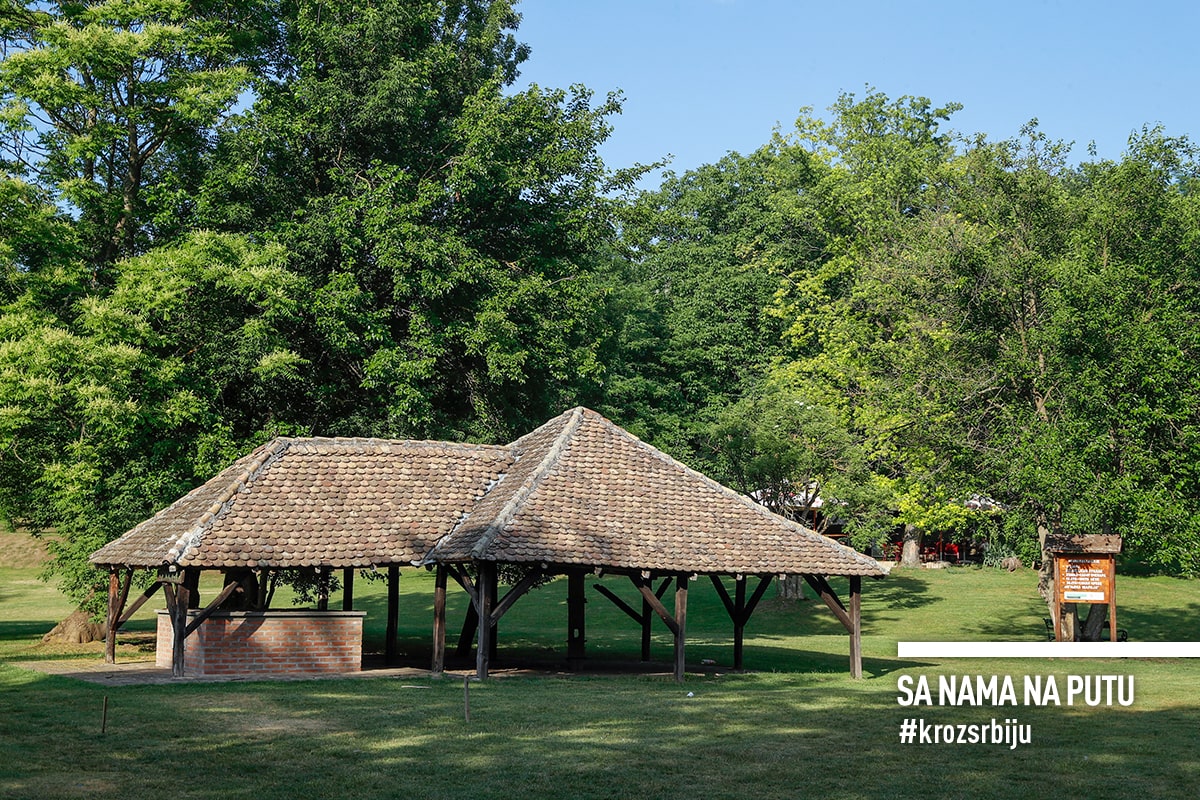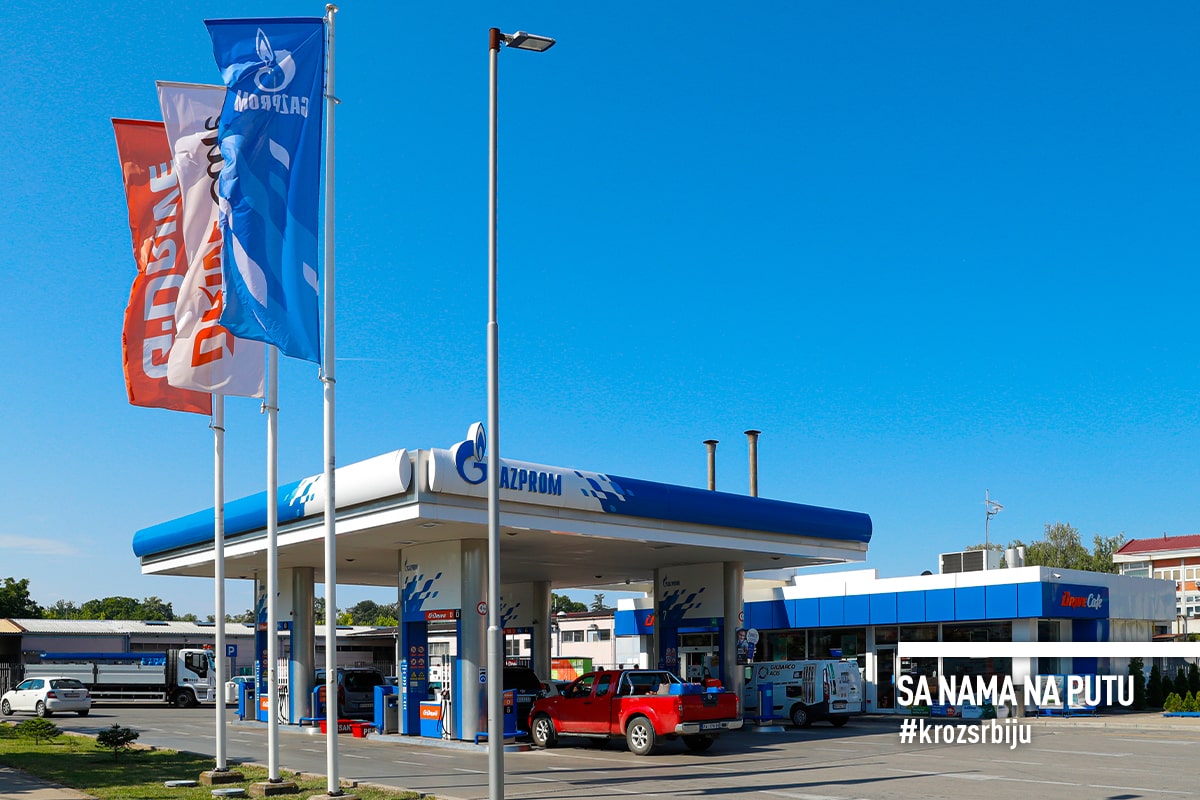Before summer officially begins and the great Sun shows its glow, we decided to travel a little. In the landscape that the vast Pannonian Sea was once splashing, a long time ago. And then, all of a sudden, it dried up, leaving its bed to others to take care of. How did nature play with it, what kind of playful scenery did it make and what gems did it give us? We are rushing to find out. From the capital, the fastest road leads through Pančevo.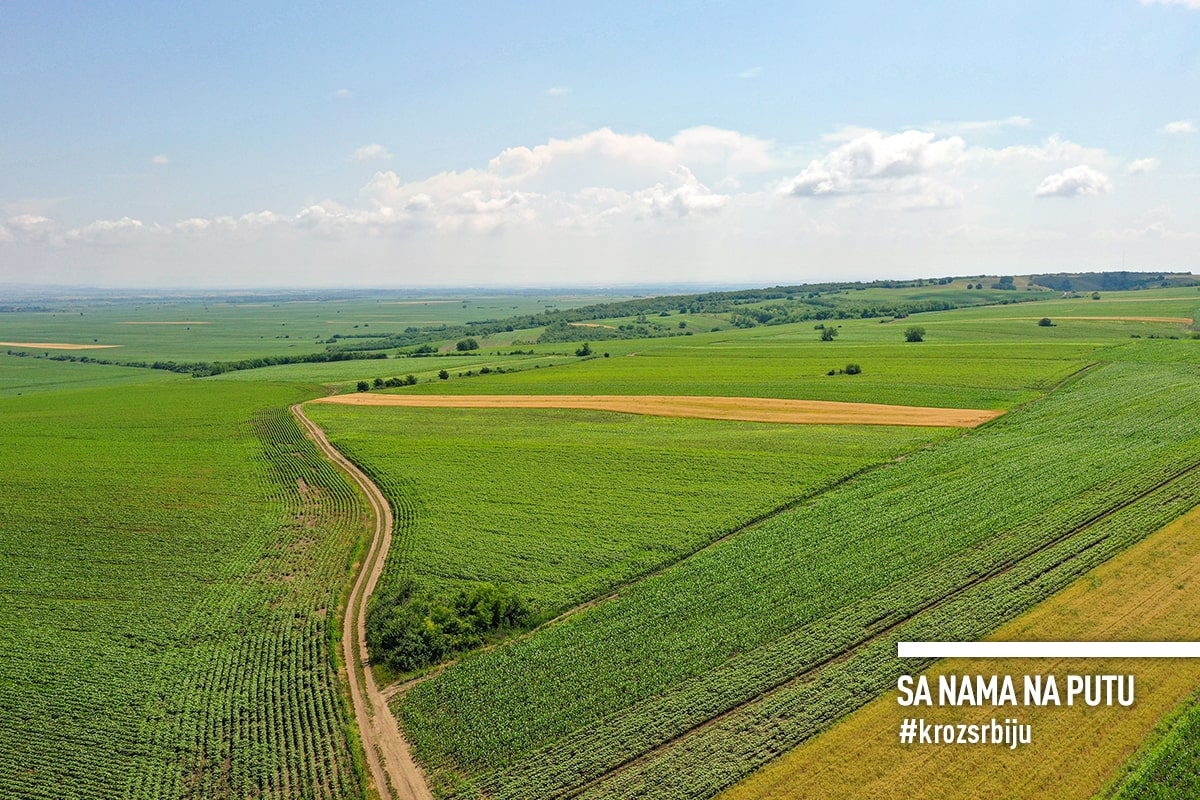
Why visit Deliblatska peščara
1. Because Zagajička brda are a rest for senses
We reach the hidden corner of Banat via Alibunar and the settlement of Izbište. We drive on a dirt, or rather a sandstone road through a colourful plantations of maize, wheat and sunflower. “It’s good it hasn’t rained for a few of days. Not even four-wheel towing could help then. We would have to walk”, our good host tells from his experience, the keeper of the Special Nature Reserve “Deliblatska peščara” while we walk the perimeter thereof with him. We come to the obelisk, the highest point of this magnificent landscape. Sort of a lookout. On one side, the view extends to the huge, modern windmills that are slowly waking up. In the background, there is a lonely piece of a mountain. We know that the romantic Vršac and the rich vineyards nestled under it. On the other side, unexpected scenery. Emerging from some point of a weary plain. Corrugated, green hills. “They were sand dunes”, the keeper explains, interrupting our enthusiasm. They stretch endlessly into the distance… somewhere up to the mighty Danube, he adds.
Looking as a curling carpet of just mowed grass. It would take a whole army of mowers to trim it, we thought for a moment, but soon we realize it is yet the magic of nature. It made them this way. The velvet rug of grass is woven with forest ornaments. Some trees, mostly dwarf ones, grow upright, some, on the slopes of the hills, are slanted. As if they are stretching out their hands to their relatives across the valleys that separate them. They might touch, some day. What a tame place. Nature produced it, unbeatable Košava wind sculptured it. Never asking for awards or medals, respect only. It has been shown, so far. Uninhabited by humans, pure, intact. Like in a fairytale.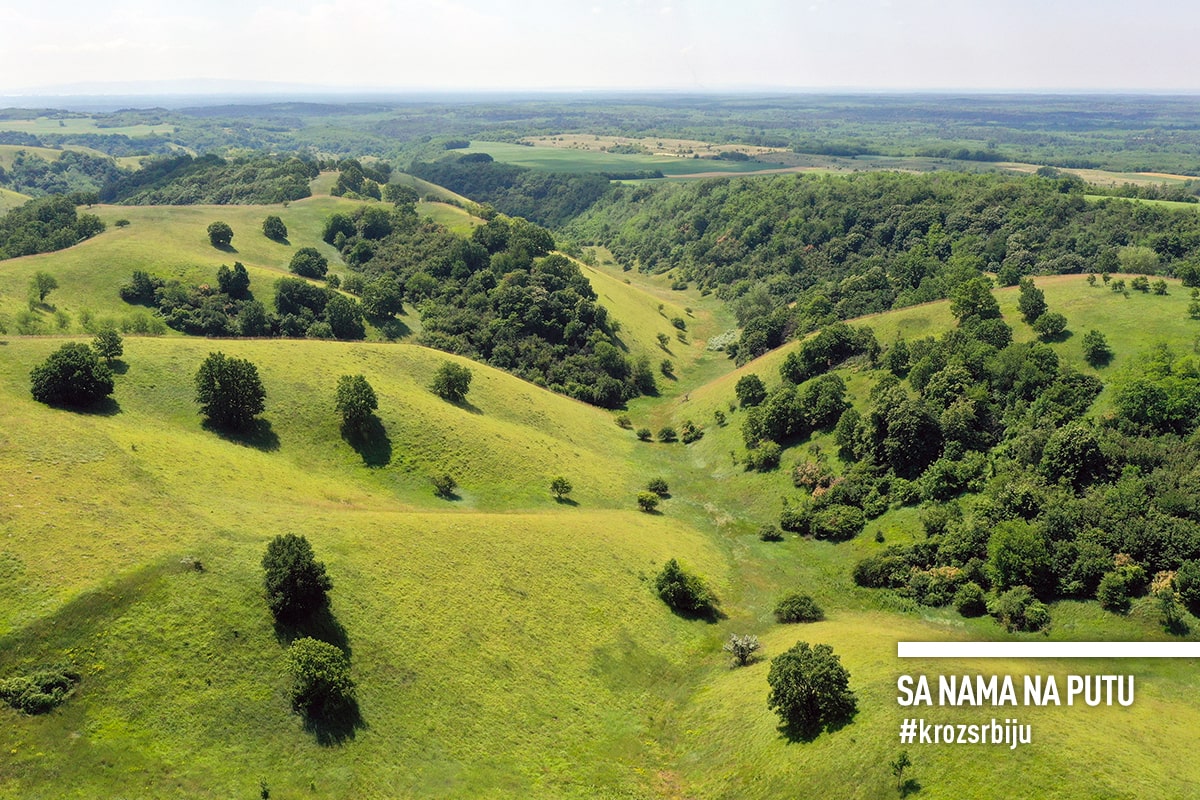
Several small paths go from the obelisk. Go by foot or take a bike and enjoy. Just beware of wasps, little and tiny, whose sting itches as if they are much bigger. Whether they are attracted to perfume or clothes of bright colours… we did not have a clue, but they were our constant companions.
2. Because Deliblatska peščara is the european Sahara
The nickname once given remains to this day. Whether Banat plains indeed resemble desert landscapes, we will find out soon. We are going through the settlement of Šušara. At the entrance, stand the structure too high for the alley, and it is not a church. More than a century ago, a well was dug there and a windmill was put into operation to pump the water out. Designed by none other than the Eiffel Project Bureau. Although it could be just a model of the trademark of Paris, you should definitely stop and observe it.
From the settlement we turn to a sandy road bordered by lush vegetation and trees. We come out into the open, where the distinct landscape meets the eye. The bold ones climb up to the observation deck. The view extends to the golden and green fields interspersed with a variety of plants and trees. It was worth climbing every step. There is no sign of the desert. Where did it hide, we look curiously at the keeper. We learn that indeed it existed once. It was created a long time ago, it is not known when exactly, and later on Košava wind formed a distinctive dune landscape at the altitude between 70 and 200 metres. It was this violent, uncontrollable wind from the Carpathians that spread the sand all around. To confront it somehow, the ruler of the Habsburg estates, Maria Theresa, began a reforestation. “Serbs saved Europe”, our witty host emphasizes sarcastically. “And who else could do such a thing?”, we gladly accept the joke and jointly take all the credit for today’s lush vegetation in the place of the former wasteland.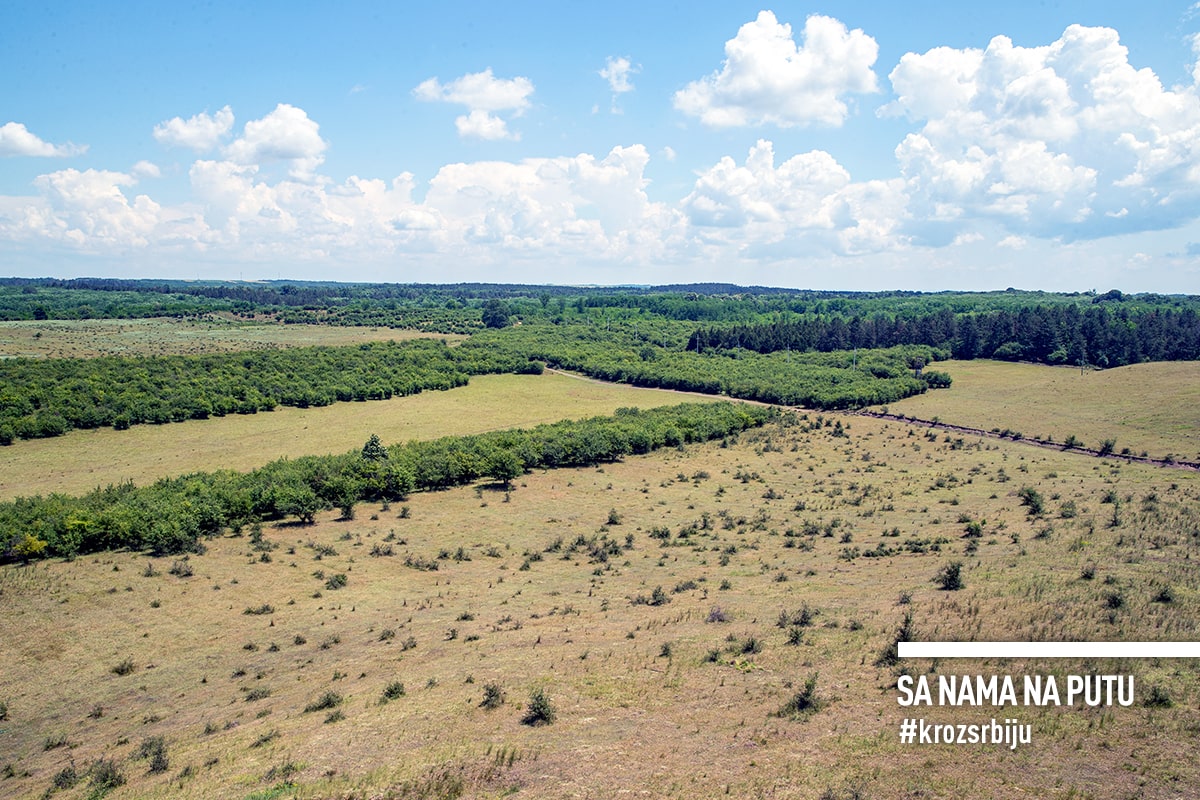
It is the largest sandstone in Europe. It expands over approximately 35,000 hectares, in a southeast-northwest direction. Weather conditions, sandy soil and the absence of surface watercourses have created distinctive habitats. More than 900 species and subspecies of plants grow here. It is the only habitat of Banat peony, as well as of other rare species such as steppe peony, Pančić’s warmwood, umbel rindera, dwarf everlast, and the juniper tree, the only wild coniferous tree of the Pannonian Plain. Together with them, acacia and pine rule this place. The mixed vegetation provided home for desert ant, ant lion, Banat falcon, steppe gerbil, European ground squirrel, lesser mole-rat, and steppe polecat. It is one of the most important centres of biodiversity in Europe and the most significant steppe area of our homeland, but also an internationally essential habitat for birds.
Labudovo okno, comprising parts of the Danube and the river bank the southern edge of the plain, was entered into the List of Ramsar Wetlands of International Importance in 2007. Many swamp birds settle the alluvial plains and little isles of the mighty Danube, along the banks of the wet meadows and steppe pastures, among white and yellow water lillies, orchids, and sweet-scented bulrush (sweet flag). It is also the most important winter resort for water birds in Serbia and nesting ground for a number of endangered species. Even extremely rare predators, such as the white-tailed eagle and its close relative, the wedge-tailed eagle, come by sometimes. Around 40,000 birds reside here each year. What a flock!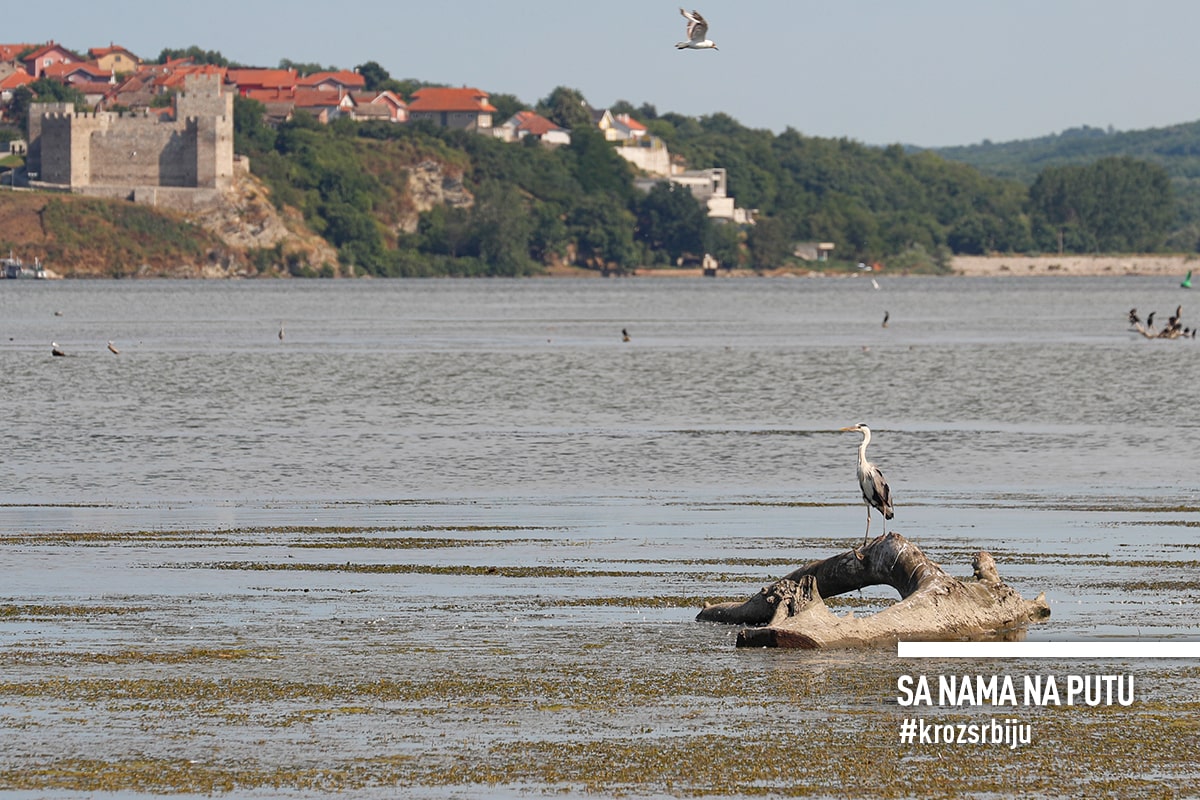
The Special Nature Reserve “Deliblatska peščara” may be entered from many sides. The most famous starting point is at the School-Recreation Centre “Čardak”, a few kilometers from the village of Deliblato. In addition to sports and amenities, you can stay overnight and dine. There are several well-marked paths from here leading to lookouts and rest stops. This is where you get all the necessary instructions and tips for an adventure through Deliblatska peščara. Make it exciting and safe.


